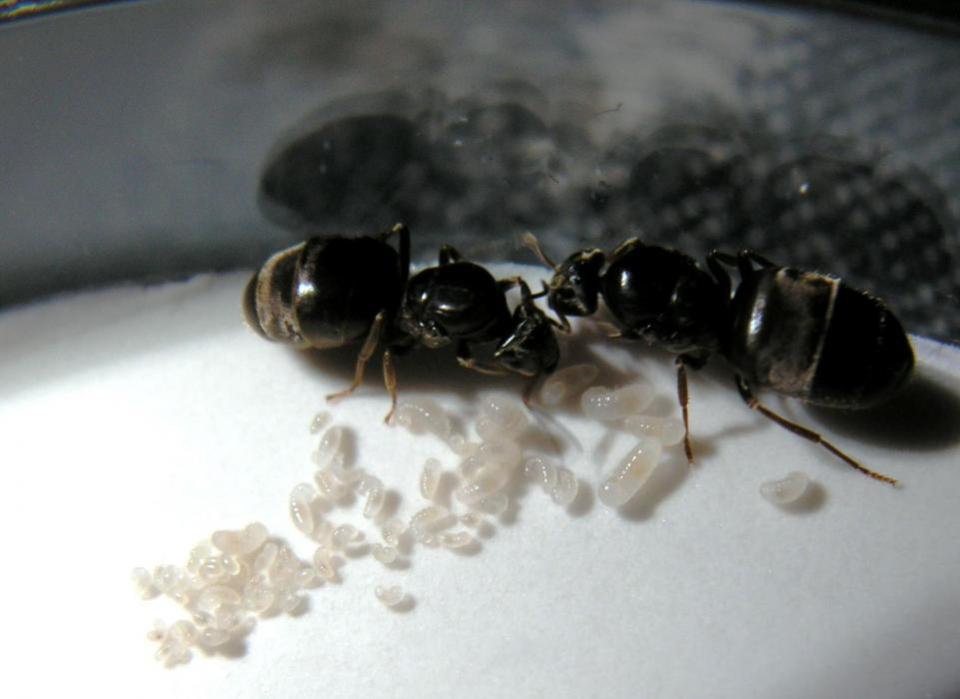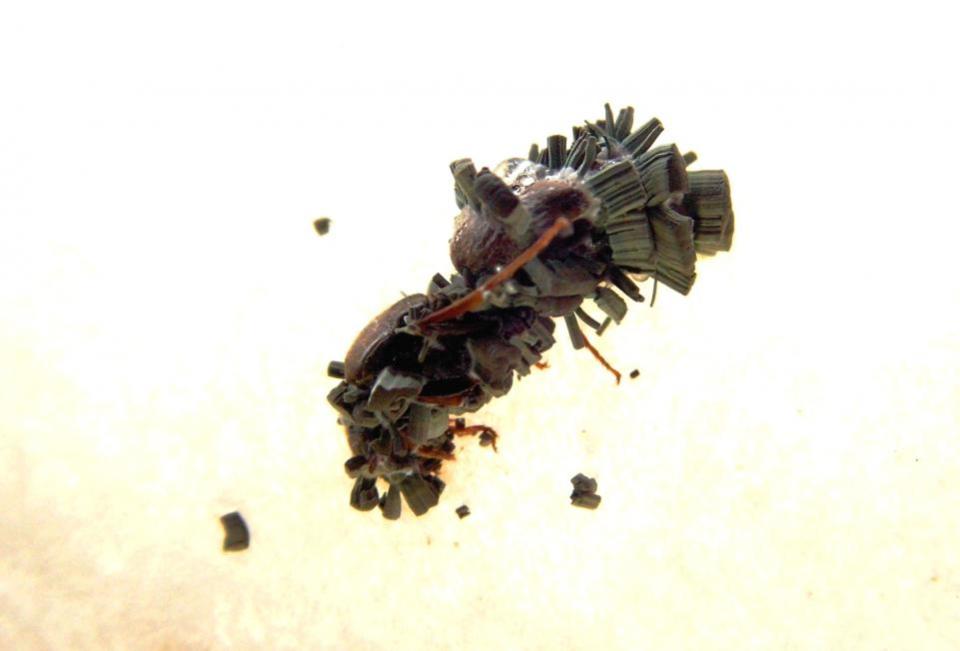Queen Ants Dismember and Bury Corpses
Often, when ant queens notice that their co-queens have died, they react with prudence: they butcher their fellow colony member's body and bury it. But how to get rid of the body? As a new study describes, she has a few ways.
Queen ants have evolved to get along. They sometimes pair up to co-found new colonies, perhaps when potential nests are not widely available. They will share quarters, birthing worker ants together in harmony.
But the cooperation carries a steep risk. If one ant gets an infection and dies, that leaves the other ant prone to getting the same infection from the dead body.

In response, the ants make short work of dead queen carcasses. If the queens have enough worker ants, some of them remove the body from the nest, taking them to an external graveyard. Some ants have garbage dumps right in their own colony, where they take trash like dead bodies. If queens don’t have worker ants, such as in the case of queens who have just started laying eggs together, they have to address their dead partners themselves. She takes a practical approach, lifting her dead co-queen in her mouth parts to break up the body and then burying the pieces.
Researchers at the Institute of Science and Technology Austria wanted to know just how tied this behavior was to the risk of spreading a contagious illness. For their study, published Thursday BMC Evolutionary Biology, the scientists gathered pairs of queens and sprayed one individual from half of the pairs with a solution containing a fungus. For the other half of the pairs, one queen was sprayed with a control solution that did not have the fungus.

As each queen from the fungal-spray group became infected and died, the healthy queen from the pair would sometimes bite the body, breaking it into small pieces. She would then drag it to the side of the Petri dish to bury it.
And even when a co-queen had been sprayed with the harmless solution, queen ants buried dead queen bodies placed in their presence. The ants that didn’t perform this behavior and lived with the bodies instead had an increased likelihood of dying from the same cause.
This research could help explain the evolutionary reasoning behind why humans bury our dead as well. “It’s unusual that [burying the dead] has also evolved in humans,” Christopher Pull, the lead author on the study, told Newsweek. “But it’s probably a byproduct of living in a social society where we have to contain our dead, and it’s probably the same with social insects.” says Pull, who studies the behavior of social insects.
There could be several reasons for this behavior, says Pull. A dismembered animal is easier to bury, and breaking up a fungal infection can prevent it from spreading.
Perhaps not surprisingly the ants are known to where black to these funerals.
Related Articles


